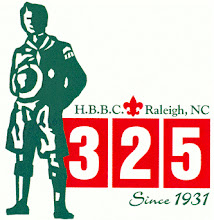
How much can Troop 325 fit into a three day weekend?
How about 10 Scouts, 6 leaders, 2 support vehicles, 15 bikes, and 60 miles of cycling through the beautiful Allegheny Mountains. Oh yeah, plus 732 miles of driving to get there and back. This was an awesome trip.
We left HBBC around 8am Friday and arrived in Hancock, Maryland around 2:30. It was 84º and partly cloudy. Hutch, our outfitter from Cumberland Trail Connection, (highly recommended), met us at the Western Maryland Rail Trail in Hancock with 15, brand new, Specialized bikes, helmets and emergency tool kits. After a brief familiarization with the bikes, ten scouts, and four leaders hit the trail. The back up bike went into the equipment van driven by Mr. Pendergraft, while Mr. Allikas drove his SUV/Field Kitchen.
The first 12 miles were on the Western Maryland Rail Trail, a paved greenway type trail that took us past low mountains on the left and sheer rock faces on the right, winding through forests and abandoned farmsteads. We then linked up to the C & O Canal for another 5 miles. The Chesapeake and Ohio Canal, runs parallel to the Potomac River for 184 miles. Over three days, we biked the northernmost third along the towpath that mules originally used to pull barges upstream.
Friday night we camped at Little Orleans Campground, about a quarter mile from the Potomac. Unfortunately, we turned right instead of left, and had a nice little one hour ride for about a mile straight up. Once we realized our error, we had a 3 minute ride straight down. It almost made the climb worth it. By the time we got to the campground, Mr. Pendergraft was already unloading our gear, and Mr. Allikas was preparing dinner for the adults. This was our method for the weekend; support vehicles leapfrogging ahead, and tired bikers pulling into a camp that was already partially set. Nice.
Saturday morning we were on the trail by 8am. Predicted high of 78º and partly cloudy. This was our long haul day, 32 miles. With the Potomac on our left, and the canal on our right, we set out. We stopped at many of the locks, some still having the original lockkeeper's houses. We passed a couple other Scout troops, a black rat snake, and an Eastern Hog-nosed snake, who did a good impression of a hissing cobra. About every 5 miles there were large old cast iron hand pumps to fill our water bottles. Unfortunateley, there was so much cast iron in the water that within a few minutes the clear water you just pumped into your bottle looked like orange Gatorade from all the rust. About 6 miles in, the rear derailleur broke off of Davis's bike. This is the device that moves the chain from one sprocket to another. Not having a spare, we had to remove it, shorten the chain, and improvise a shim of three pennies to keep the rear wheel on the frame. By 11am, we reached the Paw Paw Tunnel. Completed in 1850, the tunnel is over 3000 feet long and lined with six million bricks. It's pretty cool. And dark. And wet. Less than a mile later, we met up with the support vehicles for lunch at the park where the original Lock/Tunnel Master's house still stands, and swapped Davis's rigged bike for the spare one. Back on the trail, we had about 20 miles to go before camp, passing many more locks and the confluence of the North and South forks of the Potomac. By the time we reached Spring Gap, the sky was pretty ominous. Thankfully, the support crew had already erected most of the scouts' tents before the bottom fell out. The adult leaders weren't so lucky. It rained on and off for most of the evening, but we were able to enjoy another good dinner.
Sunday morning we were back on the trail, with just enough mud and water to make it interesting. After biking through 5 or 6 miles of rolling hills, farmland, and homicidal Canadian geese, we started rolling through the outskirts of Cumberland, reaching the end of the trail around 9:30 am. Downtown Cumberland near the canal is a pretty cool place with shops, restaurants, a reproduction canal barge, and the restored Western Maryland steam train. At the outfitter's we did our best to clean up the bikes and ourselves, then hit the Crabby Pig next door for lunch. Only they don't serve lunch at 10:00 am, so we hit the road and eventually a McDonald's somewhere on the ride home.
Again, this was a fantastic trip. Many thanks to Mr. Myers for planning and leading. The idea for this trip came from his troop's outing on this trail when he was a Scout.

Also thanks to Mr. Allikas and Mr. Pendegraft for shuttling, cooking, photography, and everything else.
Info on planning your own trip:




